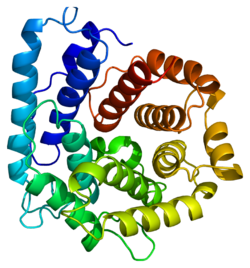C3 (protéine)

Pour les articles homonymes, voir C3.
| C3 | |||||||||||||||||||||||||||||||||||||||||||||||||||
|---|---|---|---|---|---|---|---|---|---|---|---|---|---|---|---|---|---|---|---|---|---|---|---|---|---|---|---|---|---|---|---|---|---|---|---|---|---|---|---|---|---|---|---|---|---|---|---|---|---|---|---|
 | |||||||||||||||||||||||||||||||||||||||||||||||||||
| |||||||||||||||||||||||||||||||||||||||||||||||||||
| Identifiants | |||||||||||||||||||||||||||||||||||||||||||||||||||
| Aliases | C3 | ||||||||||||||||||||||||||||||||||||||||||||||||||
| IDs externes | OMIM: 120700 MGI: 88227 HomoloGene: 68031 GeneCards: C3 | ||||||||||||||||||||||||||||||||||||||||||||||||||
| |||||||||||||||||||||||||||||||||||||||||||||||||||
| |||||||||||||||||||||||||||||||||||||||||||||||||||
| |||||||||||||||||||||||||||||||||||||||||||||||||||
| |||||||||||||||||||||||||||||||||||||||||||||||||||
| |||||||||||||||||||||||||||||||||||||||||||||||||||
| Wikidata | |||||||||||||||||||||||||||||||||||||||||||||||||||
| |||||||||||||||||||||||||||||||||||||||||||||||||||
Le C3 est une protéine appartenant au système du complément jouant un rôle dans l'immunité. Son gène est C3 situé sur le chromosome 19 humain.
Rôles
Le C3 est activé par clivage en C3a et C3b par la C3 convertase. Le C3b va cliver le C5. Cette cascade de réaction se fait de manière extra-cellulaire.
Cette activation peut être faite également de manière intra-cellulaire, dans les lymphocytes T grâce au CTSL, entraînant une réponse inflammatoire[5], par exemple en cause dans la maladie sérique.
Notes et références
- ↑ a b et c GRCh38: Ensembl release 89: ENSG00000125730 - Ensembl, May 2017
- ↑ a b et c GRCm38: Ensembl release 89: ENSMUSG00000024164 - Ensembl, May 2017
- ↑ « Publications PubMed pour l'Homme », sur National Center for Biotechnology Information, U.S. National Library of Medicine
- ↑ « Publications PubMed pour la Souris », sur National Center for Biotechnology Information, U.S. National Library of Medicine
- ↑ Liszewski MK, Kolev M, Le Friec G et al. Intracellular complement activation sustains T cell homeostasis and mediates effector differentiation, Immunity, 2013;39:1143–1157
 Portail de la biologie cellulaire et moléculaire
Portail de la biologie cellulaire et moléculaire  Portail de la médecine
Portail de la médecine


















